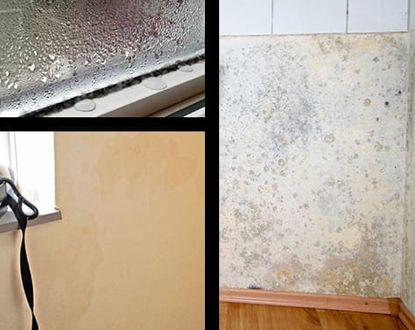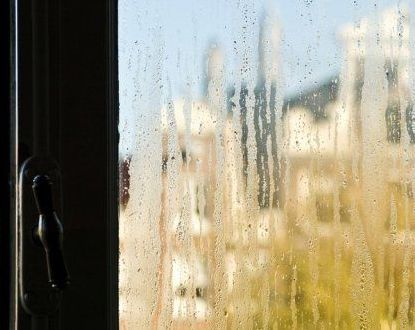Do you suffer from condensation?
SmartDry are specialist in identifying and providing solutions for all kinds of damp, including condensation. Do you suffer from damp problems? Then let SmartDry survey the property, identify the problem and provide you with a strategy to defeat those issues. At SmartDry we are here to help you with eradicating the damp. Please contact us now by email or phone to arrange your free, no obligation damp survey.
SmartDry has been the specialist
in damp solutions since 2013
100% damp-free warranty.
We can solve your problem!
Sustainable solution: better
for your health and home
Condensation on the walls in your home?
Even in the perfect home, condensation will occur. This is because humidity is generated by everyday activities such as showering/bathing, cooking, Ironing, clothing drying inside the house, the number of people living within it and condensation is the result when that humidity exceeds the maximum the air can continue to hold and deposits that humidity as condensation droplets on cooler surfaces. This becomes visible initially as damp patches and develops into mould forming as speckled black patches.
Generally, this goes unnoticed until it becomes a much bigger problem. UPVC framed double glazed windows tend not to suffer from condensation due to their exceptional thermal efficiency, they are thermally much more efficient than the walls themselves, the very latest windows that have reflective coatings on them and the space between the two panes of glass being filled with an inert gas (Argon) means its highly unlikely any condensation will form on the inner glass – damp is always attracted to the coldest spots – and these types of windows are always much warmer.
What does condensation look like?
Hot air rises, hot moist air (Humid) also rises – so condensation droplets often forms in areas where there is restricted airflow, on ceilings – usually close to outer walls, behind curtains and where the front outer wall of the house meets a side wall (due to the greater mass of brickwork and the resulting lower temperature within the wall and behind furniture that is pushed close to a wall. Initially condensation is fine water droplets on the wall – usually unnoticed, however, if these droplets remain moist for just a couple of days then the spores that form mould will adhere to the moisture and start to grow which will result in a speckled black effect on the wall – starts very light but as the spores join up a black solid patch will form.


Tackling Condensation
In order to tackle condensation, you have to understand Relative Humidity – see the section on Humidity. Condensation can be managed by being aware of the humidity generators within your household and limiting that generation or managing the balance between heating, ventilation and humidity to substantially reduce the risks of damp patches and mould formation. Of course other factors also apply – if for example your damp proof course has failed – and you are suffering from Rising Damp (This is technically Hydrostatic damp – it’s the water table in the ground pushing up against the foundations of your house) The dampness rising within the walls makes the walls much colder than the dry walls and this promotes condensation to form much quicker – and hence much more mould
Interstitial Condensation
Interstitial condensation can occur in solid and cavity wall properties, and happens when pressure and temperature differences force warm humid air through hygroscopic (water absorbing) materials until they reach a point cold enough for it to condense upon a surface. It is the result of the interaction between a complex set of factors. This includes:
- The amount of steam & evaporation and the occupancy level in a given room
- Relative humidity, temperature and pressure both inside and outside (which varies all the time)
- The structure and composition of a wall, floor or ceiling/flat roof (sloping roofs above ventilated lofts are rarely a problem)
- And the surfaces (e.g. paint type), both inside and outside, of a wall.
- In general, walls, floors and ceilings need to be hygroscopic (able to absorb moisture from the air) in order to let the building ‘breathe’. The use of breathable paints such as lime paint or clay paint is therefore recommended. Avoid all high polymer paints – polymer in simple terms is plastic – and plastic doesn’t breathe – so that includes anti damp paint and external wall protectors that repel rainwater
Plan a free damp assessment
Feel free to contact us for a free damp assessment or advice from our moisture expert.


